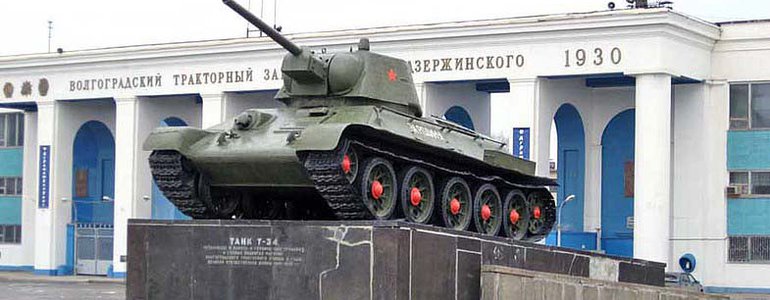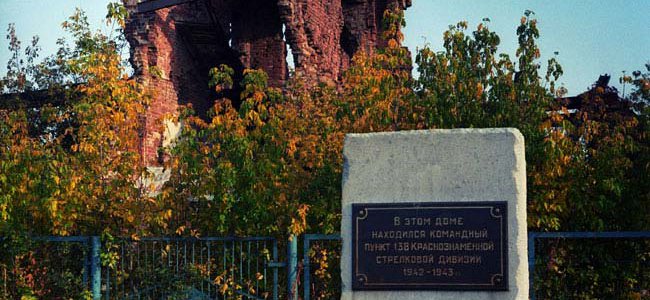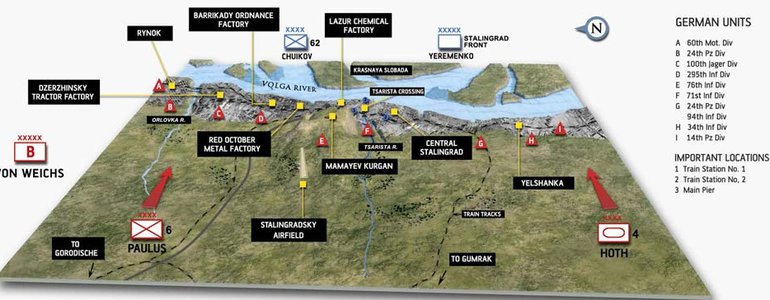 T-34,. Volgograd Plant
T-34,. Volgograd PlantToday we travel to the northern part of Volgograd to explore "the Factory". This area is made up of three factories: the Red October factory, the Barrikady gun factory and the Tractor Plant. The final German attack here was followed by the Russian counter-attack in November 1942. On the main square of the Tractor factory you will see the monument to Felix Dzerzhinsky, the founder of NKVD, and also the last legendary T-34 tank which was manufactured here. Near the Red October Factory you will see the defense line , and will realizes how close were the Germans to the Volga river.
 Lyudnikov's Island
Lyudnikov's IslandTake a tour to a famous Lyudnikov's Island/OSTROV LYUDNIKOVA. This "island" was in fact a small piece of land held by Lyudnikov’s 138th Rifle Division in November 1942. The division within 40 days was surrounded by the enemy - from three sides! And from the fourth side there was the Volga river. So this little scrap of land, 700 meters wide and 400 meters in depth, is known in the history of the Battle of Stalingrad as Lyudnikov's Island. The whole story is incredible but true. The ruins of the divisional command post still remain behind the Barrikady Gun factory. Passing by Gumrak, an important district, we continue towards Rossoshka reconciliation ensemble, is 35 km outside the city. It includes an impressive memorial of the two former enemies now seeking for reconciliation: Soviet and German military cemeteries. Here you will see the remains of German blindages and trenches reulary visited by rtesearches. More than 60 000 Germans and 25 000 Soviet men are buried here.
 Stalingrad battle's map
Stalingrad battle's mapContinue to Pitomnik, the German airfield in prerie ("steppe”) and take a tour to Soldiers' Field on the outskirts of the city. The sight is also a perfect view of the city defense line. The main composition of the memorial is a bronze sculpture of a girl, rushes to the common grave of Soviet soldiers. There is a funnel in the form of a five-pointed star in the center of the memorial. It rises from the bottom of "explosion" of cemented shells and shrapnel bombs, shells and mines. It is a symbol of the last explosion of the Second World War. On the back way visit of the Gorodishche settlement and its church where Germans had one of the hospitals.